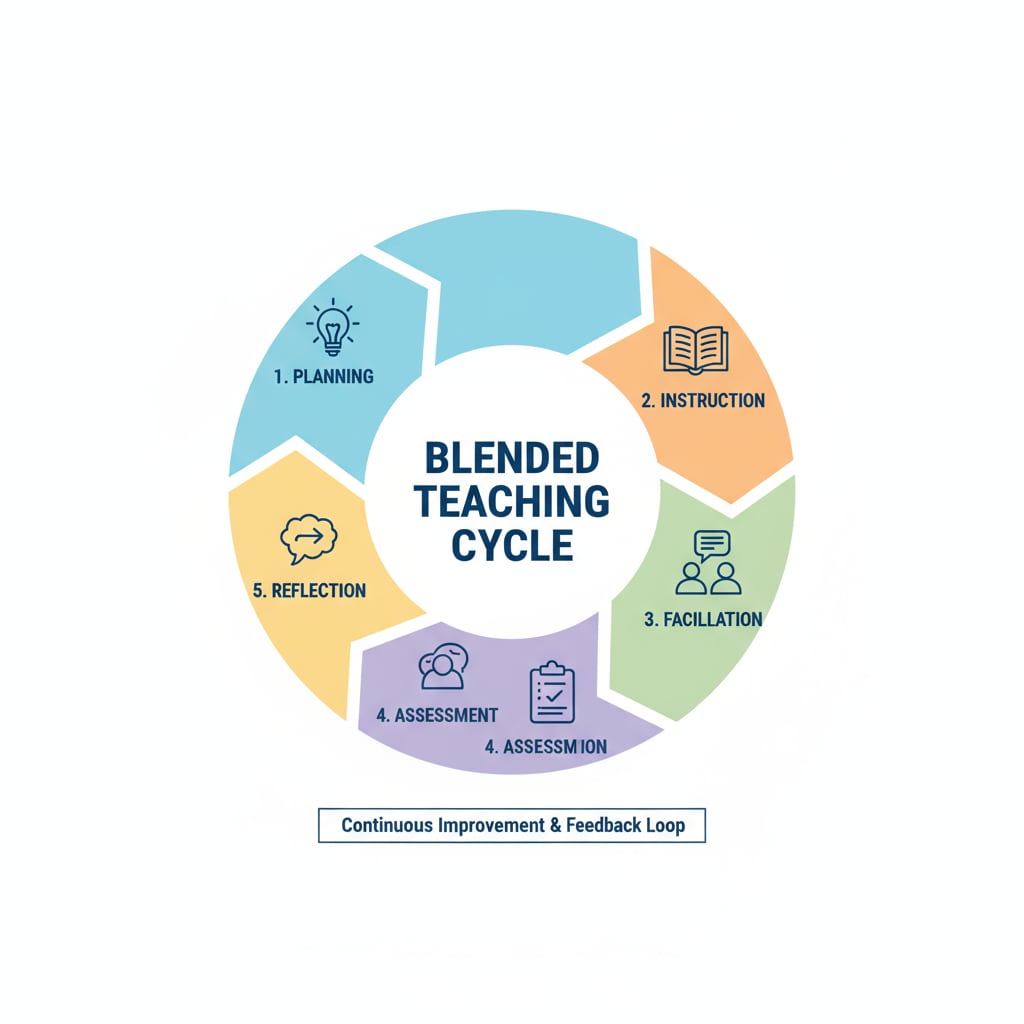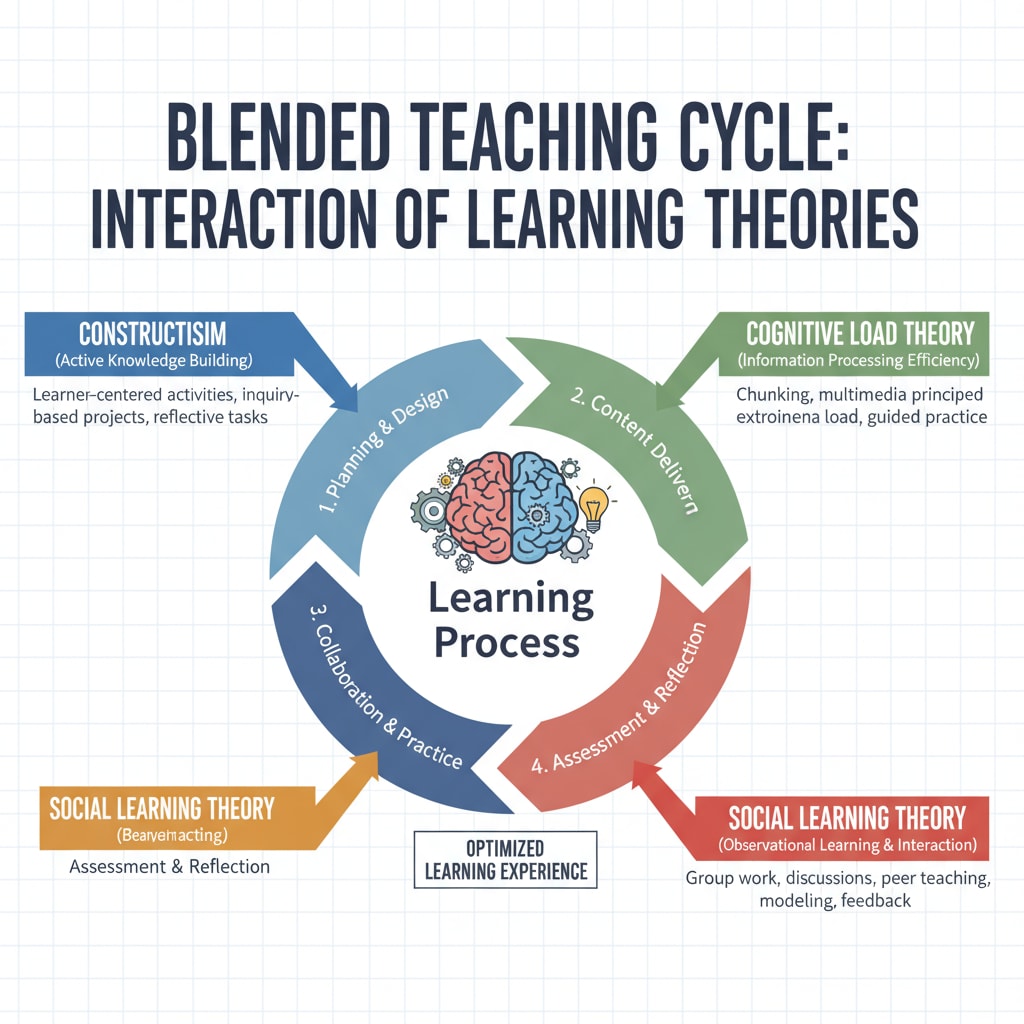The blended teaching cycle theory, an innovative educational model that combines the best of instructional and facilitative teaching methods, has emerged as a new paradigm in K12 education. This theory offers a unique approach to balance the transfer of knowledge and the development of skills. Let’s take a closer look at its structure, theoretical basis, and the advantages and challenges it brings.
The Structure of the Blended Teaching Cycle
The blended teaching cycle consists of a five-step structure. This cyclic process allows for a continuous improvement in the teaching and learning experience. First, there is the ‘Planning’ phase. Here, educators carefully design the learning objectives, select appropriate teaching materials, and plan the sequence of activities. For example, they might choose textbooks, online resources, or hands-on projects to meet the learning goals.

Next is the ‘Instruction’ step. This is where the traditional instructional methods come into play. Teachers deliver information, explain concepts, and provide examples to ensure students understand the basics. In addition, the ‘Facilitation’ phase follows. During this stage, educators create an environment that encourages students to explore, collaborate, and think critically. They might organize group discussions, problem-solving activities, or research projects.
Theoretical Basis of the Blended Teaching Cycle
The blended teaching cycle theory is grounded in several educational theories. One of the key theories is constructivism. According to constructivism, learners build their knowledge through active engagement with the environment. In the blended teaching cycle, the facilitation phase allows students to construct their understanding by exploring and interacting. Another important theory is cognitive load theory. This theory emphasizes the importance of managing the cognitive load on students during learning. By combining instruction and facilitation, the blended teaching cycle aims to optimize the cognitive load, ensuring students can effectively process information. Constructivism on Wikipedia Cognitive Load Theory on Britannica

Moreover, social learning theory also plays a role. Social learning theory posits that learning occurs through observation and interaction with others. The collaborative activities in the facilitation phase of the blended teaching cycle align with this theory, as students learn from each other’s experiences and perspectives.
Advantages of the Blended Teaching Cycle
One of the significant advantages of the blended teaching cycle is that it caters to different learning styles. The instructional phase benefits students who prefer direct instruction, while the facilitation phase suits those who thrive in an exploratory environment. In addition, it enhances student engagement. The variety of activities keeps students interested and motivated. For example, group projects in the facilitation phase can spark students’ enthusiasm as they work together towards a common goal.
Furthermore, the blended teaching cycle promotes the development of critical thinking and problem-solving skills. The facilitation phase provides opportunities for students to analyze problems, generate solutions, and evaluate their effectiveness. This helps students become more independent and confident learners.
Challenges of the Blended Teaching Cycle
However, implementing the blended teaching cycle also comes with challenges. One of the main issues is the need for educators to have a diverse skill set. Teachers must be proficient in both instructional and facilitative teaching methods. This requires additional training and professional development. Another challenge is the management of classroom time. Balancing the different phases of the cycle within the limited time available in a school day can be difficult.
In addition, ensuring equal participation in the facilitation phase can be a challenge. Some students may be more reserved and less likely to actively engage in group activities. Educators need to find ways to encourage all students to participate and contribute.
In conclusion, the blended teaching cycle theory offers a promising approach to K12 education. By combining instructional and facilitative teaching methods, it provides a balanced way to transfer knowledge and develop skills. While there are challenges in its implementation, with proper training and planning, educators can effectively utilize this model to enhance the learning experience of their students. The blended teaching cycle theory, with its unique structure and solid theoretical basis, is set to shape the future of K12 education. Readability guidance: The article uses short paragraphs and lists to summarize key points. Each H2 section provides a list of related ideas. The passive voice and long sentences are kept to a minimum, and transition words are used throughout to improve flow.


